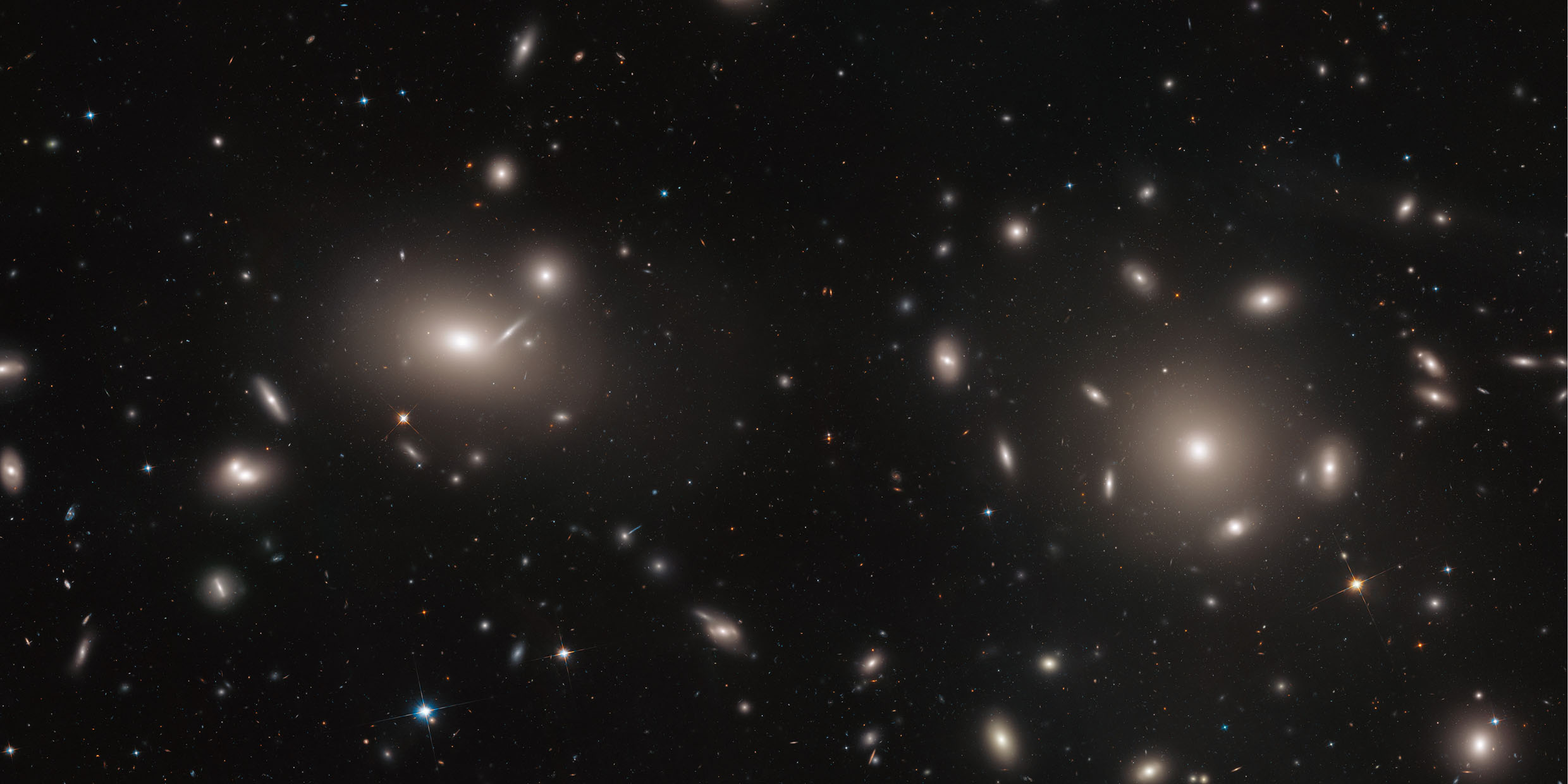Originally published 22 November 1993
The hunt is on. The scent of the prey is in the air. The hunters are working themselves into a frenzy of excitement.
The quarry? Dark matter. The unseen substance that supposedly constitutes as much as 95 percent of the universe, the hidden mass that will determine the universe’s ultimate fate.
There is glory to be garnered. Trophies. The prize is so great that the competition is stiff to get one’s name before the public first, impressed upon the minds and memories of the Nobel selection committee.
Imagine! A great dark continent of matter, constituting most of what exists in the cosmos, waiting to be discovered. The ultimate terra incognita. The Fountain of Youth, the Seven Cities of Cibola, and the Source of the Nile — all rolled into one.
The existence of this hidden stuff was first guessed by astronomer Fritz Zwicky in the early 1930s. He measured the relative velocities of galaxies in the Coma cluster of galaxies, and he estimated the total mass of the galaxies in the cluster by adding up all of their luminous matter. The problem was this: The galaxies are moving so fast that they should long ago have escaped the gravitational attraction of the system. In the time since the galaxies formed, more than 10 billion years ago, the members of the cluster should have dispersed. Yet the cluster is apparently stable. Something non-luminous is holding it together.
Something with mass. Something with lots of mass.
In recent years, more and more gravitational evidence has been added to Zwicky’s observations to suggest that galaxies and clumps of galaxies contain vastly more matter than is apparent from the light of stars.
What is this missing stuff?
Around our corner of the cosmos, most of the known matter is concentrated in our star, the sun; everything else — planets, moons, asteroids, comets, meteoric dust — is just a drop in the bucket. Whatever hidden matter is, it is certainly not the kind of familiar objects that populate our immediate environment.
A number of candidates have been suggested. Among the most eagerly sought:
- MACHOs, or “massive compact halo objects,” huge numbers of planet-like objects too small to have ignited as stars, or burned-out cores of stars, forming a vast dark halo around galaxies.
- WIMPs, or “weakly interacting massive particles,” subatomic particles filling the universe, that were created in myriad numbers in the Big Bang, but which are almost impossible to detect because they interact so weakly with ordinary matter.
The search is on. Armed with telescopes, satellites, computers, and exquisitely-sensitive particle detectors, a slew of clever astronomers and physicists are each hoping to become the Christopher Columbus of dark matter.
If dark matter can be proven to exist, in the amounts predicted, then we will gain confidence in our understanding of the universe. If dark matter remains elusive, then our present understanding of nature may be seriously flawed. The riddle is well worth solving; the search is of profound importance.
But tune up your hype detectors.
Treat skeptically recent claims by several groups of astronomers to have detected MACHOs, based on variations in the brightness of stars or quasars. The premise of these claims is that invisible MACHOs passing between us and distant luminous objects briefly focus the light and cause blips in brightness. The blips have been ballyhooed in the media as The Discovery of Dark Matter. But stars and quasars may vary in brightness in ways we do not yet fully understand, and a few blips hardly constitutes proof.
Take any claim of discovery of “the Holy Grail of cosmology” with a grain of salt. In fact, keep handy a whole bowl of salt.
You’ll hear that detection of MACHOs or WIMPs constitutes a “new Copernican Revolution,” or even the “ultimate Copernican Revolution.” Copernicus displaced us from the center of the cosmos, say the seekers of dark matter; confirmation of dark matter will bump us even further from prominence.
“How much further can we fall?” asks astrophysicist Lawrence Krauss. If dark matter exists in the quantity sought, then we are “an insignificant bit of “noise’ — a cosmic afterthought,” he says.
Dish up the salt! The mere fact that most of what has weight presently eludes our senses hardly constitutes a revolution on the same scale as that of Copernicus.
Most scientists, and many philosophers and theologians, have long since accepted our spatial and temporal insignificance in the universe. Whether life is a cosmic afterthought, as Krauss claims, or a cosmic forethought remains an open scientific question, but detection of dark matter will do little to change our understanding of ourselves.
The entire biomass of Earth is negligible compared to the mass of the planet, just as the mass of the planet is negligible compared to the mass of our star. If all luminous matter in the universe turns out to be only the tip of the gravitational iceberg, then that will hardly alter our view of ourselves. In that sense, at least, we have no further yet to fall.
Far more significant for our cosmic sense of self would be detection of an intelligent signal from space, from a real E.T., either macho or wimpish. Knowing with certainty that the flame of intelligence burns brightly among the stars would indeed be a revolution to rival that of Copernicus. Not a fall, but a restoration to centrality.



